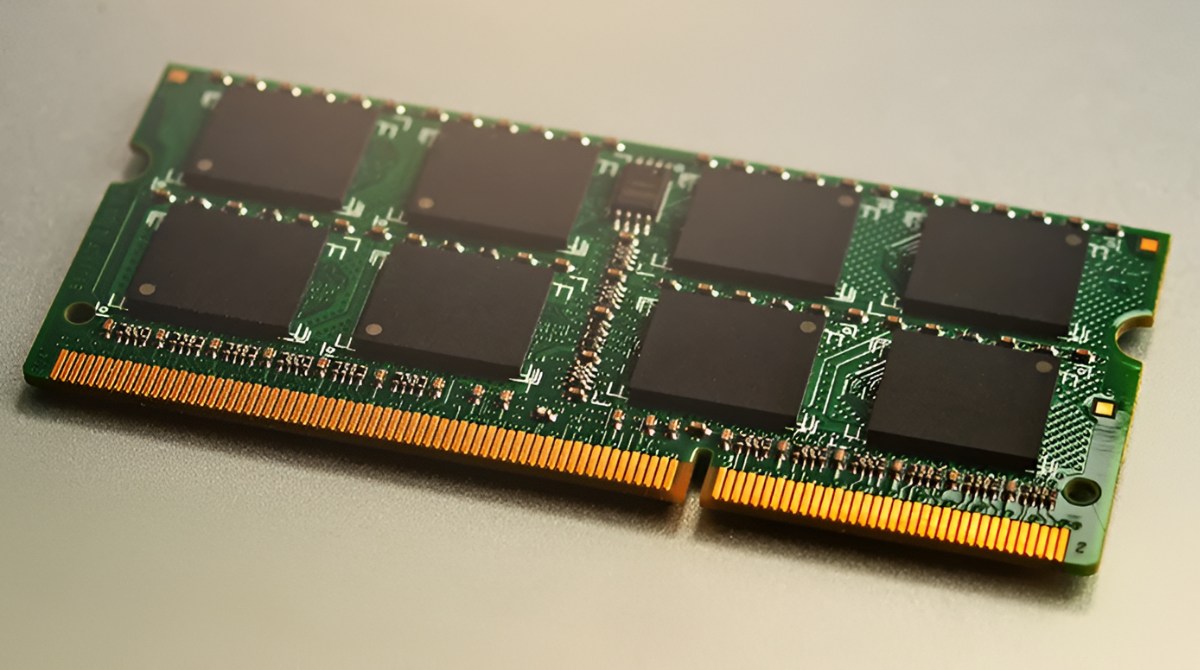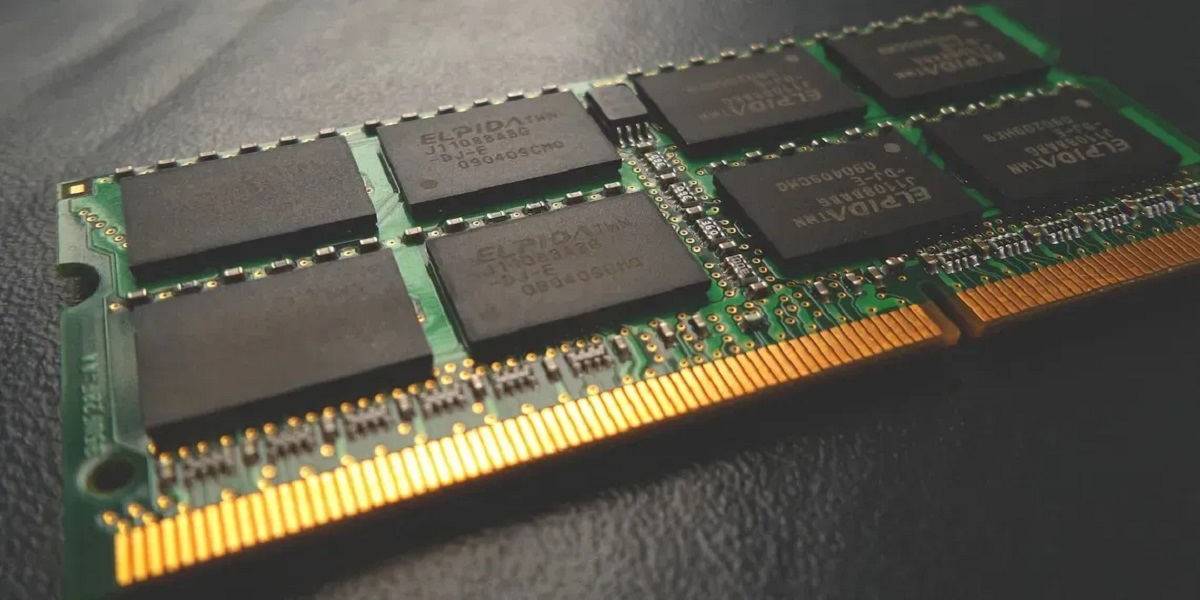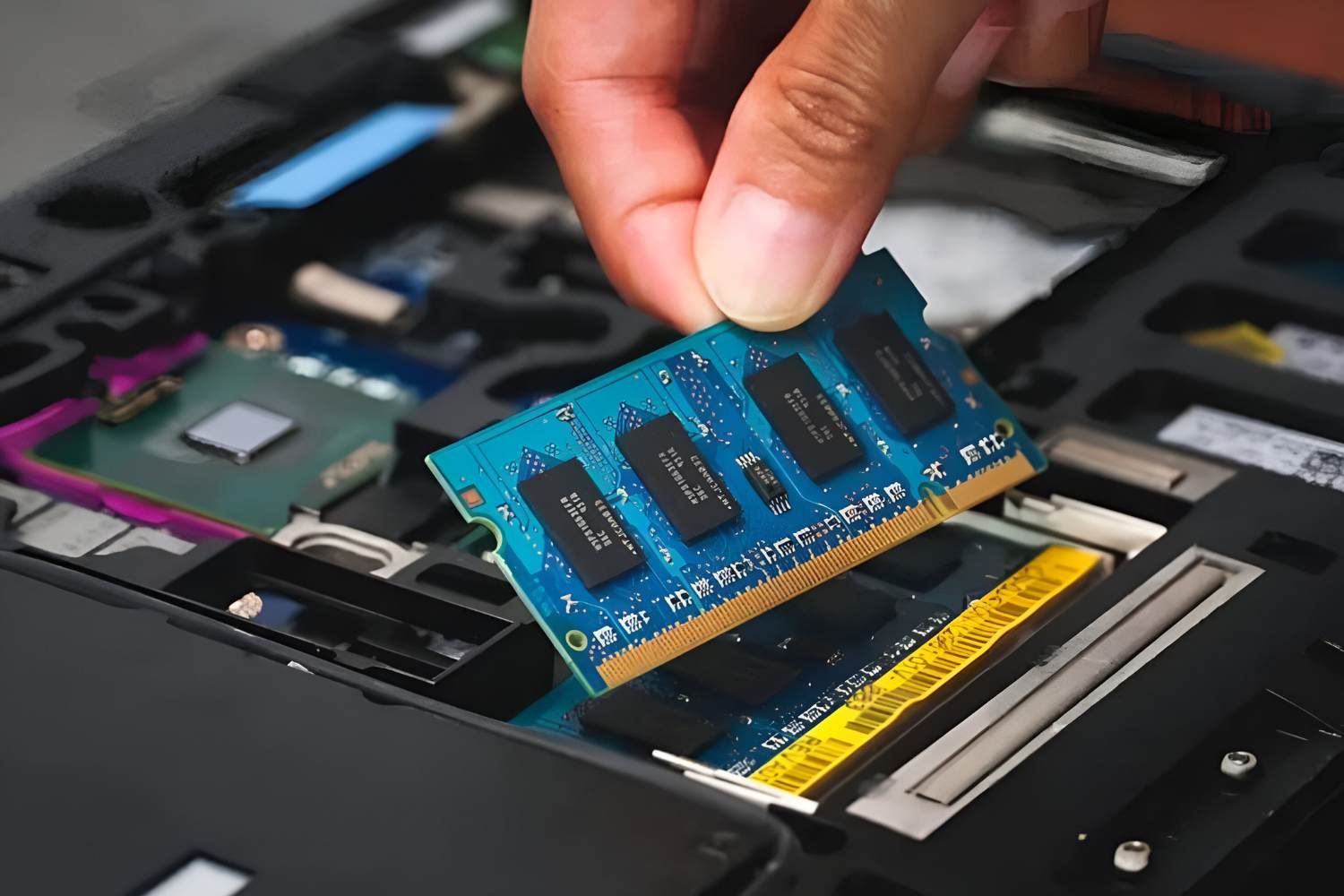Introduction
Knowing the specifications of your computer’s RAM (Random Access Memory) can be essential for optimizing performance, troubleshooting issues, or considering an upgrade. RAM plays a crucial role in determining the speed and efficiency of your computer’s operations, making it important to have a clear understanding of its capabilities.
RAM is a type of computer memory that temporarily stores data that the processor needs to access quickly. It allows your computer to perform multiple tasks simultaneously, providing fast and temporary storage for actively running programs and data. While storage devices like hard drives retain data even when the computer is powered off, RAM is volatile and loses its data once the computer is shut down.
Why is it important to know your RAM specifications? Firstly, it gives you insights into the overall performance of your computer. Understanding the amount of RAM installed on your system can help you determine if it meets the requirements of the software you intend to use. Insufficient RAM can lead to slow performance, lagging, or even crashes when running resource-intensive applications.
Secondly, knowing your RAM specifications is crucial when considering an upgrade. If you find that your computer is struggling to handle the demands of modern software or experiencing a noticeable decline in performance, increasing your RAM capacity may be a viable solution. However, before making any upgrades, it’s important to know your current RAM specifications to ensure compatibility and make informed decisions.
Now that we understand the significance of knowing your RAM specifications, let’s explore how you can check your RAM on different operating systems such as Windows, macOS, Linux, Android, and iOS. By following these steps, you’ll be able to identify the specific details of your RAM configuration, including its type, capacity, and speed.
What is RAM?
RAM, or Random Access Memory, is a vital component of any computer system. It is a type of volatile memory that allows the computer’s processor to quickly access and retrieve data that is actively being used. Unlike traditional storage devices such as hard drives or solid-state drives, RAM does not store data permanently.
The main purpose of RAM is to provide temporary storage for data that the computer needs to access frequently and quickly. When you open a program or load a file, it gets temporarily stored in RAM, allowing the processor to quickly retrieve and manipulate the data. This process significantly improves the overall speed and responsiveness of your computer.
RAM is measured in gigabytes (GB) and is an essential resource for multitasking. Each running program requires a certain amount of RAM to function properly. The more RAM you have, the more programs you can run simultaneously without experiencing a significant decrease in performance. Insufficient RAM can lead to sluggishness, freezing, or crashes when you try to run too many programs at once.
There are different types of RAM available, including DDR (Double Data Rate), DDR2, DDR3, and the latest DDR4. Each successive generation of RAM offers increased performance and improved data transfer speeds. It is important to note that RAM is not backward compatible, meaning that you cannot use a newer RAM type on an older motherboard that only supports an older version.
RAM consists of small memory chips that are mounted on a circuit board called a memory module or RAM module. These modules can be easily inserted into slots on the motherboard of your computer. The slots are designed to accommodate a specific type and speed of RAM, so it is essential to check the compatibility before upgrading or adding more RAM to your system.
In summary, RAM is a crucial component of your computer system that provides temporary storage for frequently used data. It plays a vital role in determining the overall performance and multitasking capabilities of your computer. Understanding the basics of RAM will help you make informed decisions about upgrading your system or troubleshooting any performance issues you may encounter.
Why do you need to know your RAM specifications?
Understanding the specifications of your computer’s RAM is crucial for several reasons. Let’s explore why it is important to have this knowledge.
Firstly, knowing your RAM specifications allows you to assess the overall performance of your computer. By understanding the amount of RAM installed in your system, you can determine if it meets the requirements of the software you intend to use. Insufficient RAM can lead to slower performance, lagging, or even crashes when running resource-intensive applications. By knowing your RAM specifications, you can ensure that your computer is equipped to handle the demands of your software.
Secondly, having knowledge of your RAM specifications is vital when considering an upgrade. If you find that your computer is struggling to handle modern software or experiencing a noticeable decline in performance, increasing your RAM capacity may be a possible solution. By knowing the current RAM specifications of your system, you can make informed decisions about upgrading or adding more RAM. This ensures compatibility and helps you select the right type and capacity of RAM for your specific needs.
Furthermore, understanding your RAM specifications can also help in troubleshooting performance issues. Sometimes, a computer may not be performing optimally due to faulty or mismatched RAM modules. By having knowledge of your RAM specifications, you can diagnose and address any potential problems. You can also determine if your RAM is running at the correct speed or if there are any specific configurations required for optimal performance.
Knowing your RAM specifications is not only useful for desktop computers but also for laptops and other devices like servers. Laptops often have limitations on RAM upgradability, so knowing the maximum supported capacity and configuration is essential before making any upgrades. Similarly, servers may have specific requirements for RAM to ensure efficient processing of large amounts of data.
In summary, understanding your RAM specifications is crucial for assessing overall performance, considering upgrades, troubleshooting issues, and ensuring system compatibility. By knowing the specific details of your RAM configuration, you can optimize your computer’s performance, ensure smooth operation of resource-intensive applications, and make informed decisions about future hardware upgrades. So, take the time to check your RAM specifications and harness the full potential of your computer.
Checking RAM on Windows
Checking your RAM specifications on a Windows computer is a straightforward process. There are multiple methods you can use to find this information. Here are a few common approaches:
- Using Task Manager: The Task Manager provides a variety of system information, including RAM details. To access it, right-click on the taskbar and select “Task Manager” or press “Ctrl + Shift + Esc” on your keyboard. In the Task Manager window, navigate to the “Performance” tab. Here, you’ll find the total amount of RAM displayed under “Memory.”
- Using System Information: The System Information tool provides comprehensive details about your computer’s hardware and software. To access it, press the “Windows + R” key combination to open the Run dialog box. Type “msinfo32” and hit Enter. In the System Information window, navigate to “System Summary” and look for the “Installed Physical Memory (RAM)” field. Here, you’ll find the total installed memory.
- Using Command Prompt: You can also use the Command Prompt to check your RAM specifications. Open the Command Prompt by pressing the “Windows + R” key combination, typing “cmd” and hitting Enter. In the Command Prompt window, enter the command “wmic memorychip get Capacity, MemoryType, Speed, PartNumber” and press Enter. This will display detailed information about each RAM module installed in your system, including its capacity, speed, memory type, and part number.
Regardless of the method you choose, you’ll be able to find the total RAM capacity and other important details about your memory modules. This information can help you assess your system’s capabilities and make informed decisions about upgrading or troubleshooting any performance issues related to RAM.
It’s important to note that the amount of RAM displayed may be slightly different from the physical capacity due to reserved memory for system functions. Additionally, if you have multiple RAM modules installed, each module’s specifications will be listed separately.
By using these methods, you can easily check your RAM specifications on a Windows computer and gain the necessary insights to optimize your system’s performance.
Checking RAM on macOS
Checking your RAM specifications on a macOS computer is a straightforward process. There are a few methods you can use to find this information. Here are the common approaches:
- Using About This Mac: The easiest way to check your RAM on macOS is by using the “About This Mac” feature. Click on the Apple menu in the top-left corner and select “About This Mac.” In the window that appears, click on the “Memory” tab. Here, you’ll find details about your installed RAM, including the total capacity.
- Using System Information: The System Information tool on macOS provides comprehensive details about your computer’s hardware and software. To access it, click on the Apple menu and select “About This Mac.” In the window that appears, click on the “Overview” tab, and then the “System Report” button. In the System Information window, navigate to the “Memory” section. Here, you’ll find detailed information about your RAM, including the capacity, type, speed, and more.
- Using Terminal: If you prefer a command-line approach, you can use the Terminal to check your RAM specifications on macOS. Open the Terminal application, which can be found in the Utilities folder in the Applications folder. In the Terminal window, type the command “sysctl hw.memsize” and press Enter. This will display the total installed RAM capacity in bytes. You can convert the value to a more readable format by dividing it by 1024*1024*1024 to get the size in gigabytes (GB).
Regardless of the method you choose, you’ll be able to find the total RAM capacity and other important details about your memory modules. This information can help you assess your system’s capabilities and make informed decisions about upgrading or troubleshooting any performance issues related to RAM.
It’s important to note that the amount of RAM displayed may be slightly different from the physical capacity due to reserved memory for system functions. Additionally, if you have multiple RAM modules installed, each module’s specifications will be listed separately.
By utilizing these methods, you can easily check your RAM specifications on a macOS computer and gain the necessary insights to optimize your system’s performance.
Checking RAM on Linux
Checking your RAM specifications on a Linux-based operating system is a relatively simple process. There are several methods available to find this information. Here are a few common approaches:
- Using the free Command: The “free” command in the terminal provides detailed information about the system’s memory usage, including the total RAM capacity. Open the terminal and type “free -h” or “free -m” and press Enter. This will display the total, used, and available memory, as well as other details about the RAM configuration.
- Using the top Command: The “top” command in the terminal allows you to monitor system resources, including memory usage. Open the terminal and type “top” and press Enter. In the interactive top window, you’ll find information about the system’s memory usage, including the total RAM capacity, displayed in kilobytes (KB).
- Using the lshw Command: The “lshw” command is a powerful tool that provides detailed information about hardware components. Open the terminal and type “sudo lshw -class memory” and press Enter. This will display comprehensive information about the memory modules installed in your system, including their capacity, speed, type, and more.
Regardless of the method you choose, you’ll be able to find the total RAM capacity and other important details about your memory modules. This information can help you assess your system’s capabilities and make informed decisions about upgrading or troubleshooting any performance issues related to RAM.
It’s worth noting that in Linux, the RAM usage is generally measured in kilobytes (KB), and you may need to convert the values to gigabytes (GB) for a more readable format. Additionally, if you have multiple RAM modules installed, each module’s specifications will be displayed separately.
By using these methods, you can easily check your RAM specifications on a Linux system and gain the necessary insights to optimize your system’s performance.
Checking RAM on Android
Checking your RAM specifications on an Android device can be useful for understanding the device’s performance capabilities and identifying potential memory issues. There are a few methods you can use to find this information on Android:
- Using the Settings: On most Android devices, you can find the RAM information in the Settings menu. Open the Settings app and navigate to the “Memory” or “Storage” section. Here, you’ll find details about your device’s RAM, including the total capacity and the amount of RAM currently in use.
- Using Third-Party Apps: There are several third-party apps available on the Google Play Store that can provide detailed information about your device’s hardware, including the RAM specifications. Some popular apps include CPU-Z, AIDA64, and Device Info HW. Install any of these apps, launch them, and navigate to the memory or system information section to find the RAM details.
- Using Developer Options: Android has a hidden feature called Developer Options that enables access to advanced settings and features. To enable Developer Options, go to Settings > About Phone and tap on the “Build Number” seven times. Once enabled, go back to the main Settings menu and find the Developer Options. Within Developer Options, there may be an option to view RAM usage or memory statistics, which will provide details about the RAM capacity and usage.
By using these methods, you can easily check the RAM specifications of your Android device. This information can be helpful when evaluating the device’s performance capabilities, assessing compatibility with certain apps or games, or troubleshooting any memory-related issues.
It’s important to note that the available RAM on an Android device may vary depending on the manufacturer, model, and pre-installed software. Additionally, some Android devices with low memory may utilize storage (such as internal storage or SD card) as virtual memory, which may affect the available RAM.
By utilizing these methods, you can easily check your RAM specifications on your Android device and gain the necessary insights to optimize your device’s performance.
Checking RAM on iOS
Checking the RAM specifications on an iOS device can help you understand the device’s performance capabilities and troubleshoot any memory-related issues. Although iOS does not provide direct access to RAM details through the Settings app, there are indirect ways to gather this information. Here are a few methods you can use to check the RAM on your iOS device:
- Using the Applications section in the Settings: Open the Settings app on your iOS device and navigate to the “General” section. From there, select “iPhone Storage” or “iPad Storage.” Here, you’ll find a breakdown of the storage usage on your device, including a visual representation of the memory usage. While you won’t find exact RAM specifications, you can get an idea of the available memory and potentially identify any excessive memory usage by apps.
- Using third-party apps: There are several apps available on the App Store that provide system information, including RAM details. Apps like CPU DasherX, Lirum Info, or System Status can display the RAM specifications of your device. Download and install one of these apps, launch it, and navigate to the system information or memory section to find the RAM details.
- Using Xcode: This method requires a Mac computer with Xcode installed. Connect your iOS device to the Mac using a USB cable and open Xcode. Once connected, go to the Window menu and select “Devices and Simulators.” In the Devices and Simulators window, select your iOS device from the list. Here, you’ll find detailed information about your device, including the total memory capacity and other specifications.
By utilizing these methods, you can indirectly check the RAM specifications of your iOS device. While iOS does not provide direct access to RAM details, these alternative methods can help you assess memory usage, identify potential issues, and make informed decisions regarding memory optimization.
It’s important to note that iOS manages memory allocation dynamically, so the available RAM may vary based on the device’s workload and resource demands. Additionally, iOS devices are designed to optimize performance while limiting direct user access to certain hardware details like RAM specifications.
By using these methods, you can gather insights about the RAM usage and optimize your iOS device’s performance accordingly.
Conclusion
Understanding your RAM specifications is essential for optimizing your computer or mobile device’s performance, troubleshooting issues, and considering upgrades. RAM plays a vital role in determining the speed and efficiency of your device’s operations, allowing you to run multiple applications smoothly.
By checking your RAM specifications, you can evaluate if your current RAM capacity meets the requirements of the software you use. Insufficient RAM may result in slow performance, lagging, and crashes. Knowing your RAM specifications also helps when considering an upgrade. By understanding your device’s current RAM capacity and configuration, you can make informed decisions about increasing your memory to enhance performance.
On Windows, you can check your RAM using tools like Task Manager, System Information, or Command Prompt. On macOS, the “About This Mac” feature and System Information provide the necessary information about your RAM. For Linux users, the free command, top command, and lshw command help retrieve RAM specifications. Android users can access the RAM information through device settings or third-party apps like CPU-Z or AIDA64. On iOS, while direct RAM specifications are not available, memory usage can be monitored through the “iPhone Storage” section in Settings or by using third-party apps.
Remember that knowing your RAM specifications allows you to optimize performance, assess compatibility, and troubleshoot any memory-related issues. It is worth noting that the displayed RAM capacity might slightly differ from the physical capacity due to reserved memory or virtual memory usage on certain devices.
By utilizing the various methods outlined for different operating systems, you can easily check your RAM specifications and gain the necessary insights to improve your device’s performance. So, take the time to check your RAM and harness the full potential of your computer or mobile device.

























